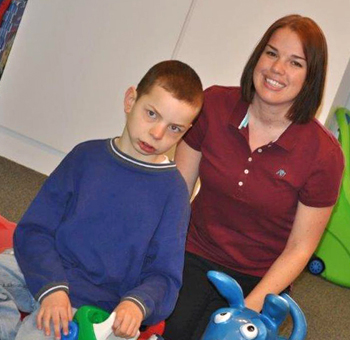
|
Pediatric Occupational, Physical, ABA/Behavioral, Feeding, Speech, and Language Therapies Main Clinic: 931-372-2567 1445 East 10th Street Cookeville, TN 38501 Email: [email protected] HIPAA Secure Email: [email protected] Fax: (931) 372-2572 ABA Clinic: 931-201-9534 400 Dubois Road Cookeville, TN 38501 Email: [email protected] Please call today to get started! Most insurances accepted! |

|
| Who needs therapy? | SE HABLA ESPAÑOL |
|
Home
>
Speech and Language Services
> Feeding Therapy- SOS based oral sensory therapy
Feeding Therapy- SOS based oral sensory therapy |

|
Picky Eater = Nutritionally Challenged Child?
By: Emily Oliverius, Pediatric SLP-CCC & Heidi Clopton, Pediatric OTR/L
Center of Development Pediatric Therapies 931-372-2567 Call Today to Schedule!
Every parent loves the idea of cooking wholesome nutritionally full foods for their children...the challenge is how to make eating broccoli and spinach fun and palatable to their little sweet-loving palates!
Eating a new food is a HUGE sensory based experience, involving smells, touch and oral sensory systems.
Children (and adults) who are picky eaters often have sensory avoidance behaviors and very hyper-sensitive systems.
To them the smell and texture of foods can be very overwhelming to their hyper-sensitive sensory systems.
We often tell families, “If a child does not want to touch a food with their hands, then they are definately not going to put it in their mouth!”. Playful and sensory based “feeding therapy” can be done under a no stress fun environment to help a child try new nutritious foods!
When infants want to get messy and play in their baby foods, PLEASE LET THEM! This is a very important developmental skill to help them accept new textures in their mouths. When infants and toddlers want to touch and play with foods, they are taking in all kinds of sensory information such as the smell, texture, and then eventually the taste.
A wonderful feeding therapy program called SOS and Dr. Kay Toomey and her research have found that there are 32 steps to trying a new food for someone with sensory oral issues:
Steps 1-5 TOLERATES a new food- being in the same room, being at the table with the food but not in their immediate space, being on their plate, and finally looking at the food in their space. This is why family style eating and serving foods to a child that they may not even eat and having a small tablespoon tolerated on their plate is beneficial.
Steps 6-9 INTERACTS with a new food- assists in shopping, preparation, set up; uses utensils to stir or pour the new food, uses utensils to touch the food to put on their own plate. Having your children help with touching fruits and veggies in the grocery store, helping in the kitchen, helping with set up, serving foods, and interact with foods in a non threatening way and in a way they aren't expected yet to have to try the new food is very important.
Steps 10-13 SMELLS a new food- Smell can be an overwhelming sensory aspect for many children, some even gag at smells. Smell is our oldest memory in the very base of our brain, some children have negative memories of something little like a tummy ache associated with a certain food smell, therefore their brain's warn them “do not eat again!”. In feeding therapy the SLP or OT can help the child overcome their primitive brain reflex to avoid or gag and accept a new smell as fun and inviting.
Steps 14-24 TOUCHING a new food- this is where all the REAL fun and progress begins! Once a child is able to allow the food near them, smell it, and then touch it with their hands we can make great progress in feeding therapy! It may start with a quick one finger tip touch...then whole hand...then we move on to 10 other body parts! Chin-cheek-under nose- lips-teeth-tip & top of tongue are all last after acceptance on hands and other body parts is met with fun and ease! So ignore what grandma says...and GO AHEAD and PLAY with your food! :)
Feeding therapy is about helping kids learn that foods can be fun! We don’t want to force them to eat things they aren’t ready for, so the goal of treatment is to make them comfortable around textures, smells and the sensory aspect of that foods.
We give them the vocabulary to allow them to talk about food and be able to express what they are feeling toward less preferred foods. We introduce them to different aspects of food, such as texture, flavor, temperature, shape, color, etc.
Oral motor feeding therapy is also appropriate to help a child learn how to handle different textures, learn to chew, swallow and help with the motor coordination required to handle different textures.
Site empowered by
WebOnTheFly